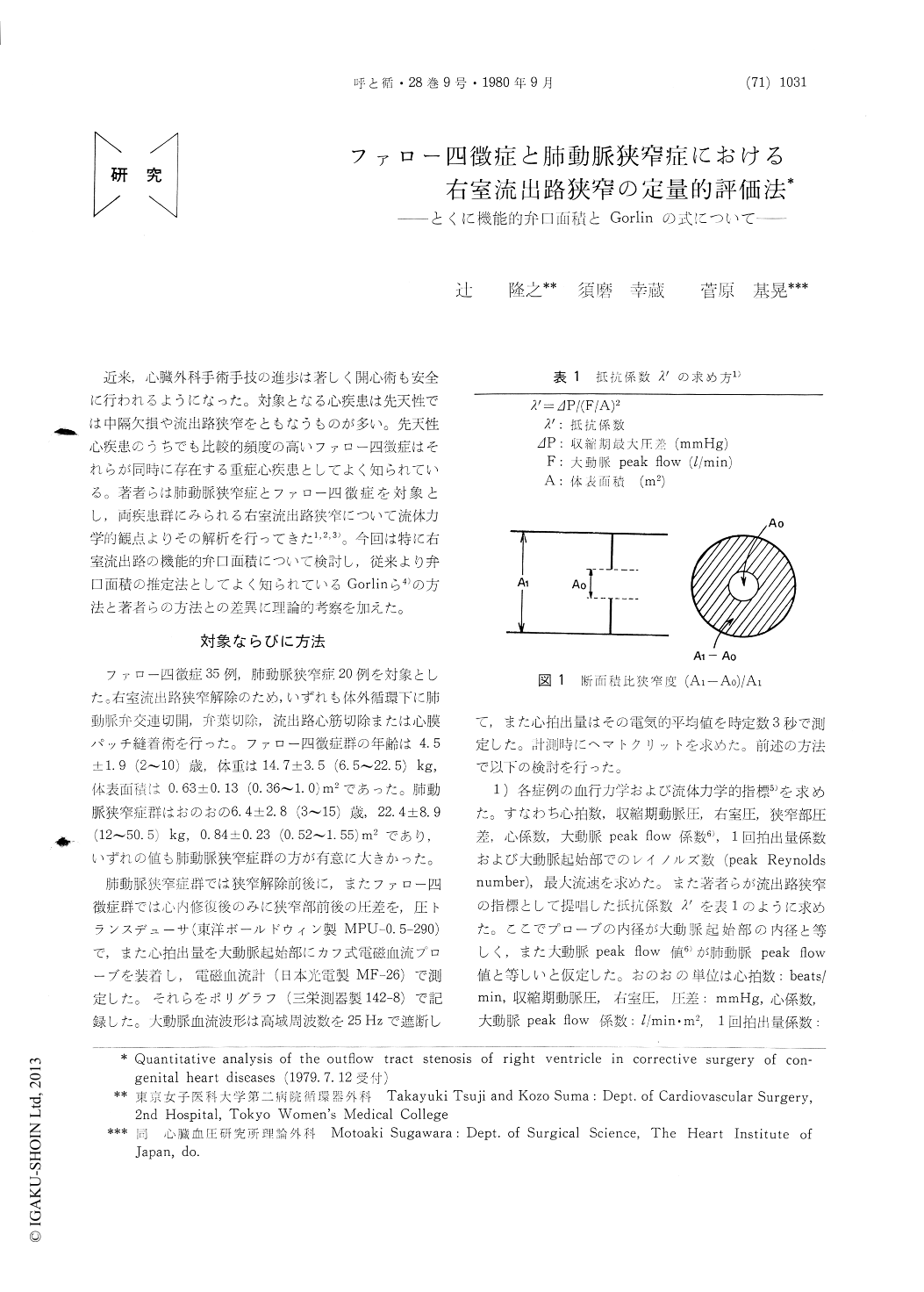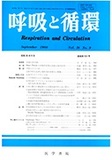Japanese
English
- 有料閲覧
- Abstract 文献概要
- 1ページ目 Look Inside
近来,心臓外科手術手技の進歩は著しく開心術も安全に行われるようになった。対象となる心疾患は先天性では中隔欠損や流出路狭窄をともなうものが多い。先天性心疾患のうちでも比較的頻度の高いファロー四徴症はそれらが同時に存在する重症心疾患としてよく知られている。著者らは肺動脈狭窄症とファロー四徴症を対象とし,両疾患群にみられる右室流出路狭窄について流体力学的観点よりその解析を行ってきた1,2,3)。今回は特に右室流出路の機能的弁口面積について検討し,従来より弁口面積の推定法としてよく知られているGorlinら4)の方法と著者らの方法との差異に理論的考察を加えた。
The stenosis of right ventricular outflow tract in 35 patients (pts) with tetralogy of Fallot and 20 pts with pulmonary stenosis was studied quantitatively using an electromagnetic flowmeter and pressure transducers during open heart surgery. The shape of stenosed outflow tract was assumed to be like an orifice in a pipe. Cross-sectional area of pulmonary valve was calculated from pressure gradient and aortic peak flow in correspondence with pressure loss coefficient and cross-sectional area ratio for an orifice.
Average functional valve area of the pts before intracardiac repair for pulmonary stenosis was 0.63±0.21 (0.30~1.07) cm2/m2 and that after the repair was 0.85±0.13 (0.67~1.15) cm2/m2. Average valve area of the pts with tetralogy of Fallot was 0.83±0.27 (0.43~1.57) cm2/m2. The pts with a valve area more than 1.0 cm2/m2 revealed no improvement by commissurotomy for valvular stenosis. Right heart failure prolonged postoperatively in the pts with the valve area from 0.5 to 0.6 cm2/m2 and the pts with a valve area less than 0.5 cm2/m2 showed poor prognosis in the postoperative course for radical correction of tetralogy of Fallot.

Copyright © 1980, Igaku-Shoin Ltd. All rights reserved.


